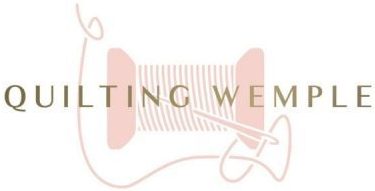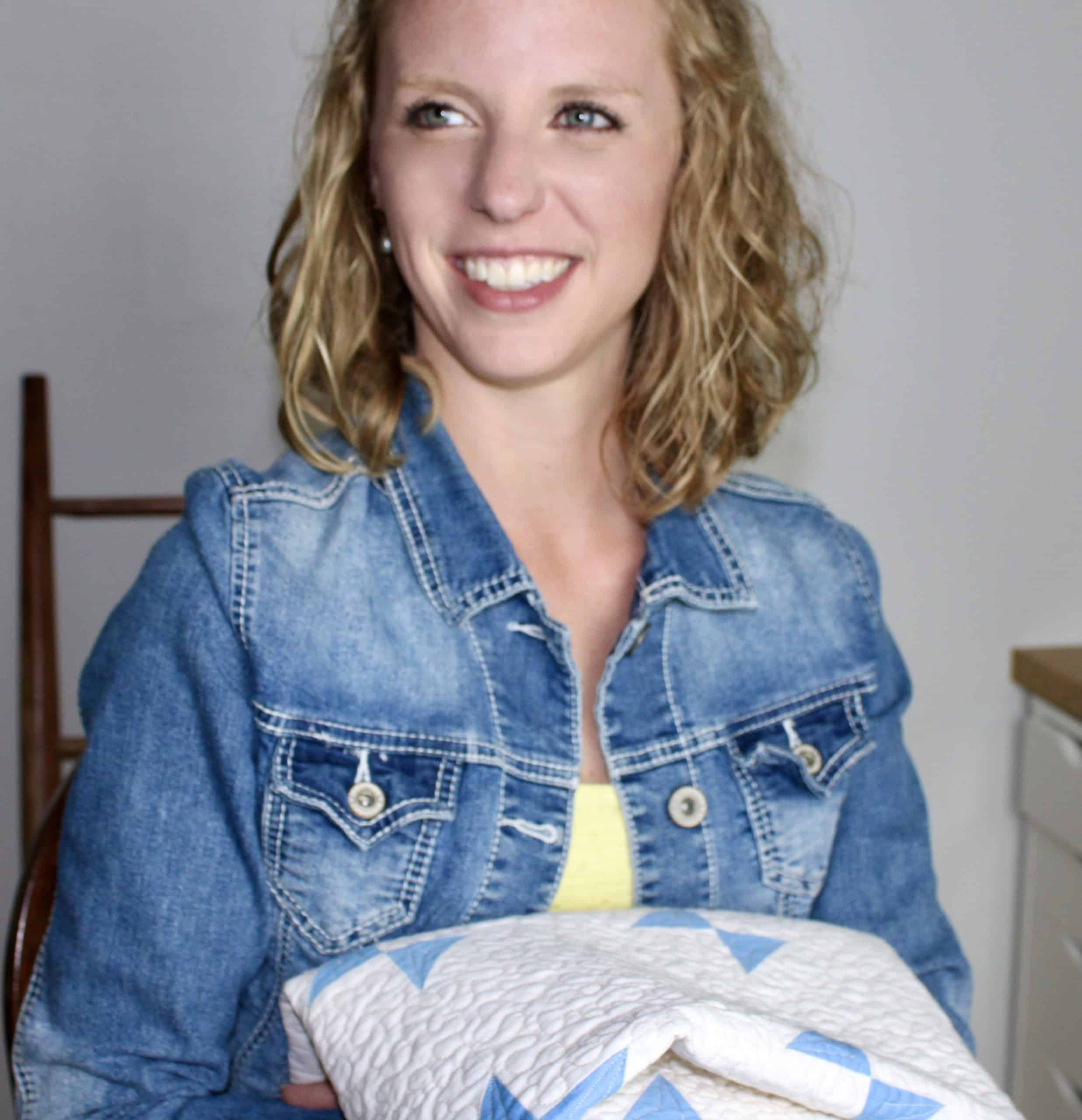Are you a person who loves being creative, but aren’t necessarily “artistic”?
I am right there with you. Never in a million years will I ever consider myself an artist, and it commonly leads me to second guess a lot of the choices I make in my quilting.
While executing a quilting plan might be easy enough, some pebbles here, stitching in the ditch there, making sure the right designs are in the right places can cause tons of anxiety!
How’s anyone really supposed to know what to quilt where? How do the professionals do it and how do I recreate it?
After a lot of research and banging my head against the wall, I realized there’s no one answer to “How do I know what to quilt?”
To a certain degree you just have to shut off the logical side of your brain, stop overthinking it, and let the creative right side take over.
At least that’s what I tell myself.
But since I am 100% a left-brained person who is terrified of having too many options, I’ve come up with a few (very) broad things to keep in mind when making quilting plans that helps guide me in the process.
So if you are like me and need help falling in love with your quilting design before committing to it, these tips and tricks will be just what you’re looking for.

Decide your commitment level and be realistic
The quickest way to build up your “not finished” project pile is to over commit when making quilting plans.
So far in my quilting career, I’ve only ever had one project that I haven’t finished.
And it happens to be the only hand quilted project I’ve ever tried.
I had grand plans for this quilt being entirely hand quilted and after about 1/4 of the quilting, I realized I hate hand quilting. Don’t get me wrong, I love the look, my attention span just isn’t long enough to see the project through.
I should not have committed myself to such a complicated plan before even knowing that I enjoyed the process.
The same can be said about any other type of quilting plan.
If you’ve never tried free motion quilting before, then deciding on a 100% custom quilting plan may not be the best idea.
Or opting for a complicated custom quilting plan when you know you only have a week to get it done may also be a recipe for stress and procrastination.
No matter how long you’ve been quilting, or your personal skill/experience level, not all quilts need to be custom quilted.
You may find that your favorite project is actually one of your simpler choices for a machine quilting plan.
Less is more

The more designs you try to pack in to a quilt, the more busy and it’ll feel.
You may at some point say that you want to do a different design in every quilt block and when you mock it up, decide you can’t stand it and you don’t know why.
When you throw too many designs at someone there can be so many to try and read that it becomes overwhelming because your eyes just don’t have a place to rest.
Consider matching your quilting design complexity to the complexity of the quilt top. If its a relatively basic design like the buffalo print in the picture above, stick with a simple plan. If its got tons of piecing that you spent a lot of time on and want to show off, go for that more complicated plan.
If you still aren’t loving what you came up with, try pairing down how many designs you are using to 2 or 3 throughout the entire quilt and see if you start to like it a bit better.
Repeat the same designs in multiple places
Quilt a design once, and it’s an accident. Use the design two or more times throughout the quilt and its an intentional design choice.
By using the same designs in different areas of your quilt, you are able to create a more cohesive plan that doesn’t just look like you were coming up with it on the fly.
Try to think of it like getting dressed in the morning.
Its not often you’ll choose the polka dot shirt with the striped jacket and the herringbone pants in the same outfit.
However you might choose a brown purse that matches your brown shoes.
Or make sure all of your jewelry is the same type of metal.
Related:
How to make a Quilting Plan
This double wedding ring quilt is a great example of this. It uses the same design in the center of every ring, and each ring has the same ribbon candy design accenting it.
By keeping the same or similar designs throughout the quilt it pulls the whole project together and helps accent areas as opposed to confuse them.
Choose contrasting designs

There are two good ways to get a quilted design to stand out in your quilts, the first way to get it done to choose contrasting designs.
Curvy lines with straight lines, or designs that run in opposing directions from each other, having designs that directly contrast each other in one way or another is a great way to draw a persons attention to the line where the two meet.
When making quilting plans, try using two highly contrasting designs next to each other to make the area stand out.
This is also a particularly useful trick when you want to do some fun quilting in the negative space of a quilt and want it to stand out.
Using a contrasting filler around a featured motif will help draw attention to the extra detail that you put in to that areas.
Don’t forget scale

The last thing to consider when making quilting plans is scale of your designs.
And for two separate but equally important reasons:
The smaller the scale of your designs, the more thread you are putting into the quilt, the stiffer the quilt will be in the end.
I absolutely get the desire to quilt a quilt to death.
When you are staring at a 4 inch swatch of your quilt at a time under your sewing machine needle, its easy to naturally keep the design within that small window under your hands.
It’s not until you finish quilting the thing that you realized your swirls are only two inches big making a (very) dense design across the quilt.
And then you try to use the quilt and realize it is stiff as a board from all the thread you put into it.
Depending on your preferences, that might not be the end product you were after.
PS. You can find the Double Arabesque Quilting Stencil in the photo above in the Quilt Shop here.
The smaller the scale of your designs, the harder it is to actually see all the detail you put in.
The texture in your quilt is discernible to the eye because of the spaces you DIDN’T quilt. The open spaces that puff up are what you see, not the stitches themselves.
If the scale of your design is so small that you end up smashing all of the air out of the batting, you will often find that all that time you spent quilting those swirls was a waste since you can’t even see them when its done.
All of the stitching lines are so close, your swirls no longer stand out.
To make a design stand out, use a filler around the outside with density that is smaller than the densest area of your featured design.
Your featured design should have large open areas where there is no stitching so when you put a filler next to it, it can still be large enough to see what that filler design is without competing in scale with your featured design.
On a domestic sewing machine you are much more likely to drift to a smaller scale than a larger scale, so when in doubt, keep your design’s scale larger than you think.
Next time you find yourself making quilting plans, be sure to give these ideas a try and let me know how it goes in the comments below!









0 Comments